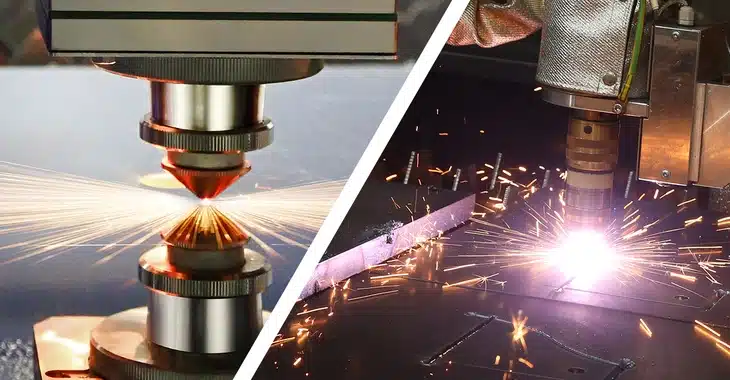
In the heart of manufacturing, traditional fabrication workshops have long been the backbone of industries such as construction, agriculture, and shipbuilding. These workshops have played a pivotal role in shaping the physical infrastructure that surrounds us. However, despite their historical significance, these workshops are not immune to the evolving demands and challenges of the modern world. The processes of welding, surface preparation, and coating are integral but often a very labour-intensive part of fabrication. The challenges faced in these processes are common across all traditional workshops, impacting efficiency, precision, and overall workplace safety.
The landscape of traditional fabrication
Welding, a cornerstone of fabrication, demands meticulous attention to detail but demands on productivity challenges welders to strike a balance between finish and efficiency. The labour-intensive nature of welding not only places a significant demand on skilled welders but also introduces a layer of inconsistency in the final product. The human element, while crucial, can lead to variations in weld quality, affecting the structural integrity and overall durability of fabricated components. Furthermore, the time-intensive nature of manual welding can impede production timelines, limiting the capacity of traditional workshops to meet the demands of rapidly evolving markets. These challenges have prompted a need for innovative solutions that can deliver precision, reduce manual labour, and enhance overall efficiency.
In parallel, companies providing surface preparation and coating services encounter a unique set of obstacles. Precision difficulties loom large, as achieving a flawless finish demands meticulous attention to detail. Material waste becomes a significant concern, both from an economic and environmental standpoint, as inefficiencies in coating processes can lead to unnecessary resource consumption. Additionally, the use of traditional methods often exposes workers to occupational hazards, including exposure to toxic substances and fumes. In the industries of construction, agriculture, and shipbuilding, where the quality and durability of fabricated structures are paramount, these challenges can have profound repercussions on the safety, longevity, and aesthetics of the final products. As these challenges persist, there is a pressing need for transformative solutions that can bring in a new era of efficiency and safety in traditional fabrication practices.
Offering a solution to these challenges is Fabtech Robotics. With over two decades of experience in robotic automation, Fabtech Robotics provides robotics solutions that not only address the pain points of traditional fabrication but also take these workshops into a new era of efficiency, precision, and safety. Speaking about the trend within the industry to move towards Robotics Managing Director Paul Collins had the following to say,
“Our aim is to empower traditional fabrication workshops to embrace the future with cutting-edge robotic solutions. The trend towards automation is not merely a shift; it’s a decisive leap into a realm where innovation meets efficiency, and we are committed to guiding our clients through this transformative journey with fully supported solutions and training.”
Robotic Solutions: Enhancing Efficiency and Precision
For fabricators the benefits of robotic solutions extend beyond efficiency, encompassing improved precision and consistency, a marked reduction in labour-intensive tasks, minimised material waste, and a higher standard of workplace safety. By integrating robotics into fabrication processes, companies can not only meet but exceed the demands of today’s dynamic market, enhancing productivity, cost-effectiveness, and innovation.
Integrating new technology into any work process can be a daunting task which is why Fabtech Robotics believes picking the right partner for this journey is key
“Our facility setup focuses as much on educating the client and keeping them informed – with an interactive R&D space and training centre, which leads to a complete and successful long-term solution”.
A simple map of this journey with Fabtech Robotics:
Understand – what is the need.
See – can we look at this somewhere been done.
Prove – create a working simulation and setup within our R&D space.
Train – understand how to drive it before it arrives.
Install – Work within your space and integrate into your environment.
Support – Keeping in front of future requirements.
Case Study: Realising the Benefits
A company serving the construction industry facing the challenges of project deliverables requires support and assistance in creating a structure and setup to fulfil the demand. Space not an issue but the challenge presented itself as follows:
Taking one product type as an example here (Ø1m part)
Taking the same part and Robotic Laser welding
Return on investment for the client is less than 12 months.
What direction do you think the company should take?
Trends in Robotic Integration
The future of manufacturing is distinctly intertwined with robotic integration. Statistics and insights paint a compelling picture, with projections indicating a substantial increase in the adoption of robotics within fabrication workshops.
As technological advancements continue to drive the capabilities of robotic systems, their application becomes more versatile, facilitating tasks beyond repetitive processes to intricate, highly specialised functions. To those who seek to thrive in the evolving market, the message is clear: Embrace robotic solutions, unlock the potential for efficiency and precision, and navigate the future of manufacturing with confidence and resilience.






Copyright © 2025 - All rights reserved. Made with 💖 by Irish Steel